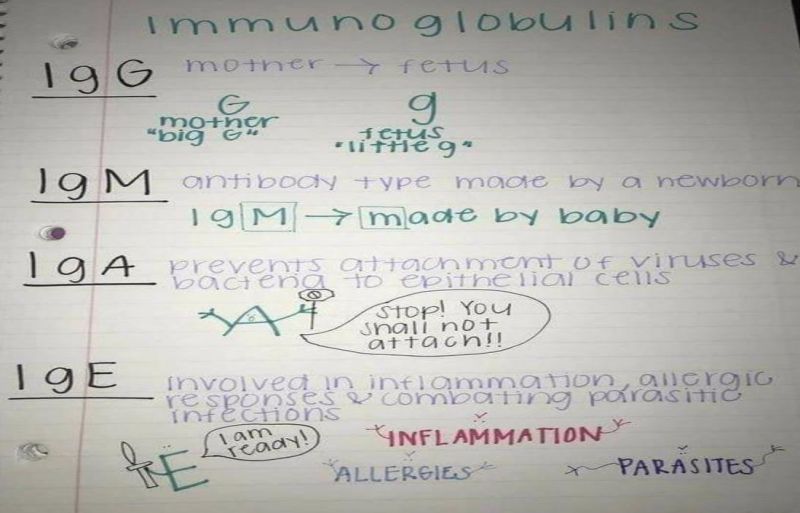Immunoglobulins
Immunoglobulins are Y-shaped globular proteins that are about 10nm in size and 150kDa in molecular weight - Christine Leduc PharmD

image by: Medical Laboratory Scientist
HWN Recommends
Immunoglobulins (Ig)
Though the general structure of all antibodies is very similar, that small region at the tip of the protein is extremely variable. This allows millions of antibodies with different tip structures to exist. Each of these variants can bind to a different antigen. This enormous diversity of antibodies allows the immune system to recognize an equally wide variety of antigens.
Resources
Utility of Anti-D Immunoglobulin (Rho Gam) During First Trimester Pregnancy
Anti-D immunoglobulin was developed in 1960’s and prevalence of alloimmunization decreased to 1-2% when administrated after delivery.
Clinical significance of five immunoglobulin tests
Five Immunoglobulin tests include IgA (immunoglobulin A), IgG (immunoglobulin G), IgM (immunoglobulin M), complement C3 and C4.
Immunoglobulin G deficiency
IgG antibodies are the smallest but most abundant antibodies in the body, making up 75-80% of all the antibodies in the body. They are present in all body fluids. The IgG antibodies are considered the most important antibodies for fighting against bacterial and viral infections. They are the only antibodies that can cross the placenta.
Immunoglobulin Types and Their Functions
Immunoglobulins were initially called neutralizing substances, and they were discovered in 1890 by two immunologists, Emil von Behring and Kitasato Shibasaburo. Immunoglobulins are special types of glycoproteins that play an important role in maintaining the body’s immune system. Also called antibodies, immunoglobulins are highly specific, and they are secreted in massive amounts by plasma cells in response to pathogenic antigens.
The diversity of immunoglobulins
Immunoglobulins can either be membrane-bound (B-cell receptor) or secreted (antibody). All jawed vertebrates possess immunoglobulin M (IgM), but other immunoglobulin types vary among species. For example, humans have five total immunoglobulin isotypes: IgM, IgD, IgG, IgE, and IgA.
Why a simple, lifesaving rabies shot can cost $10,000 in America
Untreated rabies is always fatal — but key drugs leave families with thousands in medical debt.
 Immunoglobulins (Ig)
Immunoglobulins (Ig)
There are five main types of immunoglobulins, each immunoglobulin can have a different binding site that matches a specific antigen.
OzEMedicine
A group of “antibody” proteins which form the “humoral” immune system and are produced by B lymphocytes
StatPearls
Antibodies or immunoglobulins have two light chains and two heavy chains in a light-heavy-heavy-light structure arrangement. The heavy chains differ among classes. They have one Fc region that mediates biological functions (e.g., the binding capacity to cellular receptors) and a Fab region containing antigen-binding sites.

Introducing Stitches!
Your Path to Meaningful Connections in the World of Health and Medicine
Connect, Collaborate, and Engage!
Coming Soon - Stitches, the innovative chat app from the creators of HWN. Join meaningful conversations on health and medical topics. Share text, images, and videos seamlessly. Connect directly within HWN's topic pages and articles.













